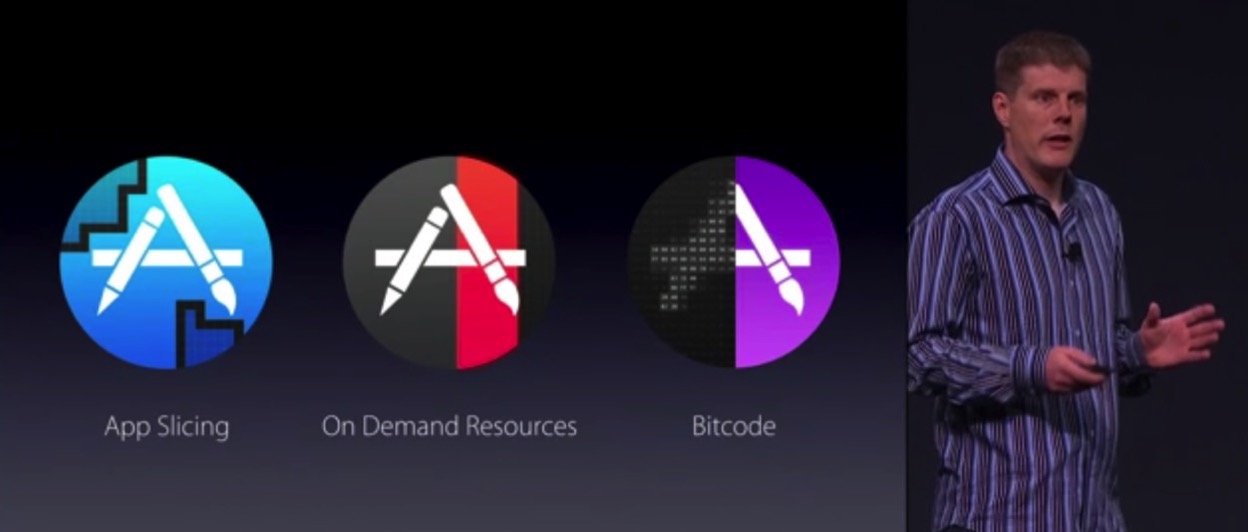„Apple’s Bitcode Telegraphs Future CPU Plans“

Aus der diesjährigen ‚State of the Union‘ (Video, ab Minute 06:35 / Transkript):
Bitcode is an LLVM Intermediate Representation of your binary, which allows the store to reoptimize your apps for each kind of device before they get delivered to the user.
You develop and debug the app the normal way in Xcode, but the store will be in a position to constantly reapply the latest compiler optimizations we have been working on so that your apps run great on all kinds of devices.
It also future-proofs your apps because it will allow the store to let your apps take advantage of new processor capabilities we might be adding in the future, and all that without you having to resubmit your app to the store.
@InertialLemon mit einer Bewertung:
The biggest news from WWDC15 is something that hasn’t even made headlines–yet. […]
iOS has over a million apps today, so switching to a radically different architecture will take at least a couple generations. Since Bitcode is optional for iOS 9 app submissions, the A9 processor in this fall’s products will be a gentle evolution. And next year’s A10 will have to stick to the existing ARM64 ABI.
But the A11? Picture all of that high powered chip design talent. Picture a whiteboard filled with a hundred PhD thesis-level ideas for improvements. Now imagine Bob Mansfield (remember him?) telling them, “Forget about compatibility. Your only criteria for the next CPU is to be better.”
Das erste iPhone hatte „die Prozessor-Power eines DVD-Spielers“. Apples A7, der erste 64-Bit-Prozessor in einem Smartphone (iPhone 5s), löste eine kleine Panikattacke unter Mitbewerbern aus. Und das iPad Air 2 ist mit seinen drei CPU-Kernen auf Augenhöhe mit einem MacBook Air aus dem Jahr 2011.